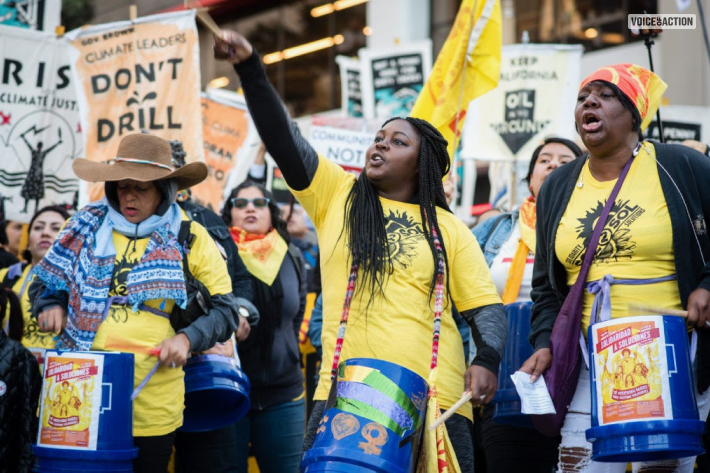Harmony in Diversity: Exploring the Intersectionality of Environmental Activism

Envision environmental activism as a rich tapestry in which the threads signify different notions of identity. Intersectionality is the concept that we experience race, gender, and more, and how these combine to cause the challenges we face. In the green movement, now picture this.
It is not only a matter of saving the planet; we must comprehend how the different backgrounds influence the journey. Including various views in environmental action brings various colors and dimensions to our solutions as a kaleidoscope of perspectives.
Therefore, let’s explore this eco-adventure, highlighting the importance and effectiveness of a mixed approach to our planet-saving venture.
What Is Intersectionality As An Environmental Problem?

About environmental issues, intersectionality stresses that no one ecological problem fits all. It acknowledges that differentiated communities experience different levels of environmental effects because of their combined identities.
Such groups as marginalized are subjected to disproportional by pollution, climate change, and depletion of resources.
The notion of intersectionality in environmental activism implies that race, gender, or socio-economic concerns play a supplementary role or can lessen the nature and complexity of the problem.
Adopting such an approach helps ensure that every community’s experience and specific requirements are considered when providing relevant solutions for addressing contemporary environmental issues. In our efforts toward achieving sustainability, we should focus on intersectional approaches that ensure there is no one left behind.
Different Aspects Of Identity Intersect With Environmental Concerns

Here are the different in intersectionality when it comes to environmental concerns differences depending on the societal hierarchy.
1. Socioeconomic Status
This reflects the relationship between economic standing and environmental health as poor neighborhoods are usually victims of pollutants and a shortage of green areas.
2 . Race and Ethnicity
Living near polluted areas is one of the manifestations of racial discrimination that people of color often face. Thus, indicating a relationship between race and environmental injustice.
3. Gender Dynamic
Women are most vulnerable when it comes to climate change although they play important roles, especially in resources management and agriculture. It is essential to realize how such gendered impacts are going to inform the development of progressive, non-discriminatory environmental policy.
4. Indigenous Connections
Indigenous communities linked to their cultural and environmental identities are threatened with destruction by such issues as deforestation and resource exploitation showing interconnections among identity, culture, and ecology.
The Many Faces of Environmental Activism

As an environmental activist, you indeed must understand the intersectionality between environmental issues, and societies. However, most importantly, you need to understand how you or others as an individual could help it.
1. Eco-Champions Unleashed
Think of an international superhero team comprised of environment-friendly heroes who have their own style in fighting for nature.
The fight towards green earth has become a joint venture involving individuals of different origins irrespective of their rural or urban status.
2. Cultivating Change in Communities
The conversion of concrete jungles into green havens through community gardens and urban farming initiatives.
The initiatives are being led by people from diverse cultures other than just fighting food deserts but promoting the bonding of communities with nature.
3. Women Warriors for Wilderness
Globally, women – these “unsung” heroes – are spearheading conservation efforts. Women are part of marine biologists and grassroots movements and they have a holistic outlook toward environmentalism.
4. Indigenous Wisdom Preserving Nature
For generations of intersectionality, indigenous people were the first to protect biodiversity with their sustainable farming. Therefore, their traditional knowledge becomes a useful resource used for developing sustainable plans.
5. Techies Turned Tree Huggers
Savvy tech people use innovation to support environmental causes. Tech people are creating apps that promote green living and also using data analytics to track deforestation among other things.
6. Youth Revolution
The youth revolution has taken charge in the whole environmental movement led by figures equivalent to Thunberg. This strong force is being made by young voices that are demanding immediate climate action today.
7 . Environmental Justice Advocate
Marginal groups speak on the social justice-environmental nexus. However, activists today insist on policy reforms aimed not only at halting further environmental damage but also at protecting such groups of people as women and children.
8. Artists Painting a Green Tomorrow
Artists, employing creativity, support conservation programs in their talent-driven campaigns. They also enlarge the sense of urgency in ecological problems and make environmental activism a creative cultural activity.
9 . Everyday Eco-Heroes
Small but sustainable, ordinary people make extraordinary contributions that do not go unseen. Eco-heroes are people who are everyday heroes who help in the reduction of plastic waste and also adopt eco-friendly lifestyles contributing to a green planet.
10. Bridging Divides for a Greener Future
Breakdown of boundaries in collaboration of people across diversified cultures. However, the environmental movement has been an intercultural phenomenon that has created different voices in search for common grounds and future possibilities whereby the earth is green and blooming with life.
Intersectionality Is A Universal Problem
Although we always believe our region deals with the most environmental issues, it is far from true. Almost everyone has their own environmental, and climate issues to deal with.
The kind of environment that one lives in is highly likely to influence his or her perception of nature. For instance, urban dwellers find it hard to breathe due to air and noise pollution, while in rural communities people are affected by agricultural runoffs making them environmentalists themselves.
One should that understanding these intersections is critical for developing comprehensive environmental strategies that tackle the diverse issues within multiple groups, hence leading to the adoption of a more generalized sustainability approach.

























